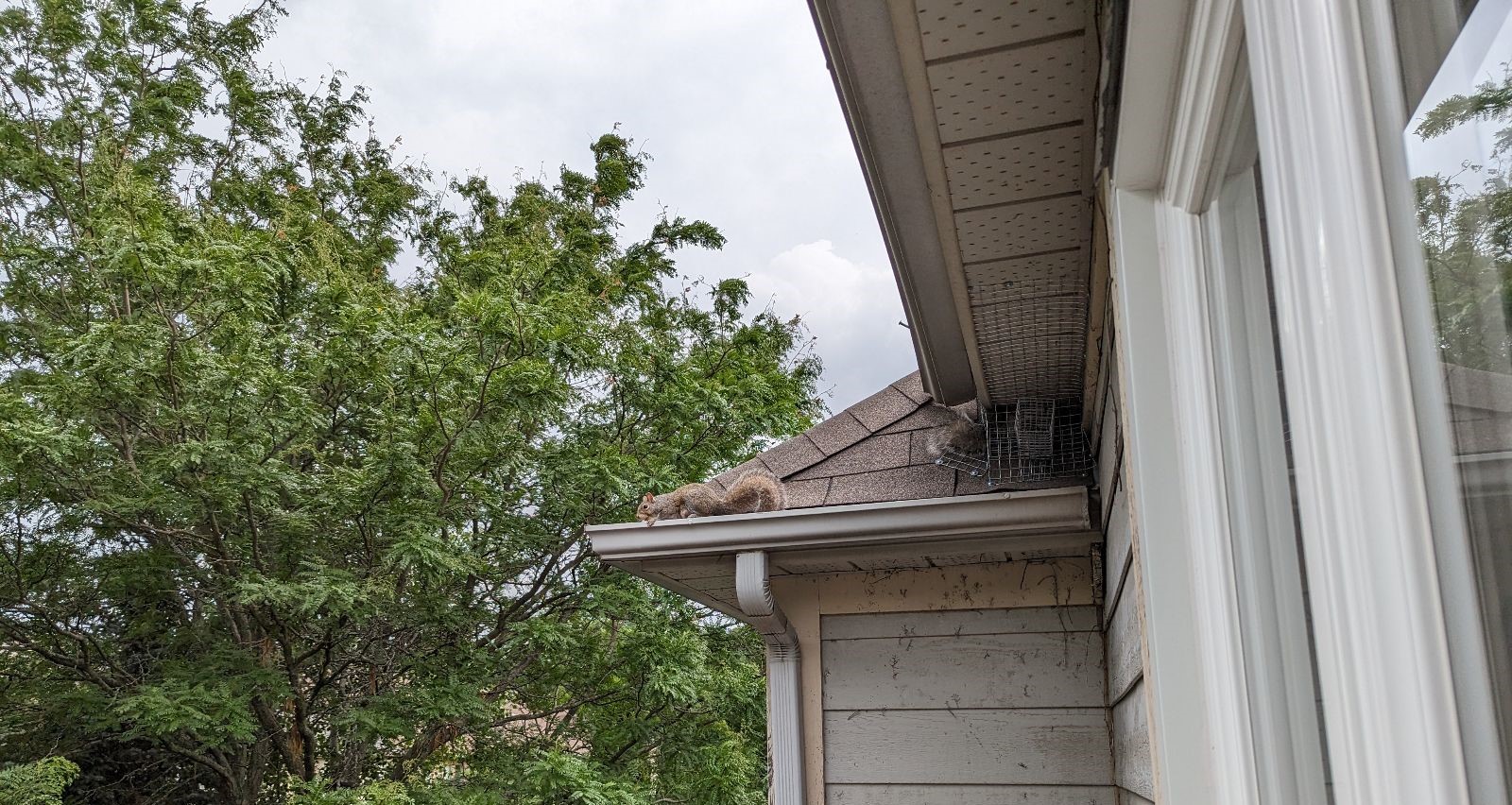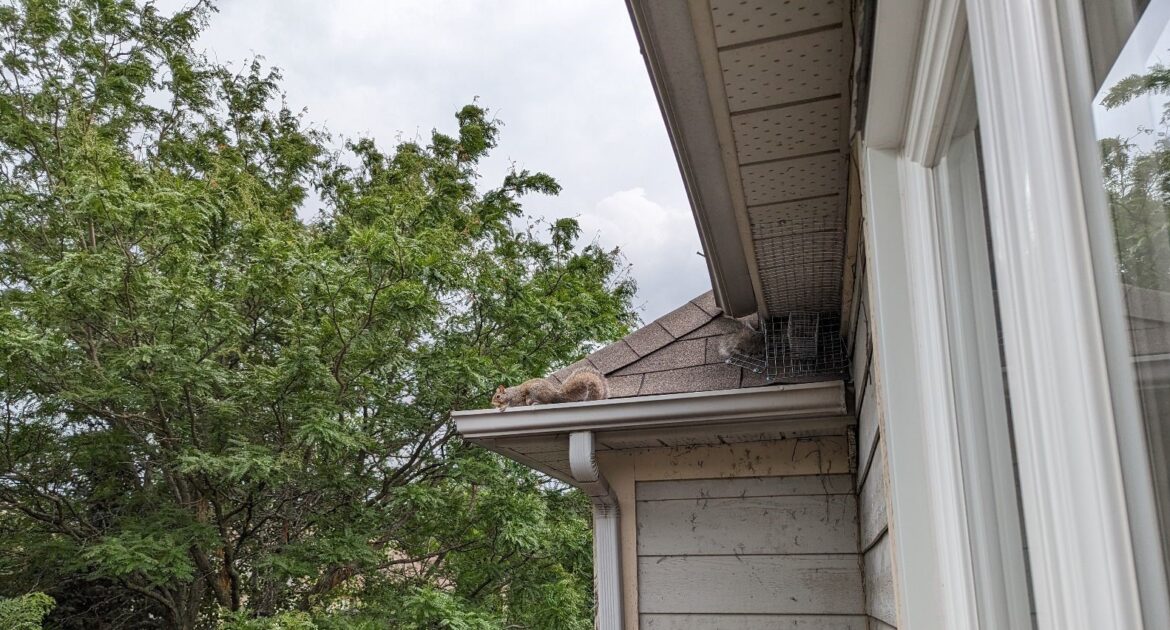If you’ve ever found yourself observing squirrels darting across your yard or scaling trees with remarkable agility, you’ve probably noticed one peculiar behaviour—tail shaking. You might be asking, why do squirrels shake their tails rapidly? While it may seem like just another quirky squirrel behaviour, this action is packed with meaning. Tail movements often signify communication, defence, or even emotion.
These fascinating facts about squirrels’ actions can intrigue us, but it’s important to remember that they can pose risks, especially if they decide to make your property their home. Read on to learn from our experts in Toronto wildlife control about squirrels and their quirky traits.
The Language of a Squirrel’s Tail
Squirrels use their tails much like a form of communication, a language of movements that can convey messages both bold and subtle. When a squirrel shakes its tail rapidly, it could signal a warning against nearby predators such as hawks, cats, or even snakes. Think of it as a visual alarm for both themselves and their fellow squirrels. The shaking tail acts like a neon sign in the animal world, saying, “Danger ahead, stay alert!”
On top of that, tail shaking isn’t just about warnings. Sometimes, it’s used during territorial disputes. Squirrels are fiercely protective of their territory and food supplies, particularly when preparing for the colder months when resources become scarce. A trembling tail during an encounter with another squirrel can be a clear declaration of, “This spot is mine!” It’s both a show of dominance and a way to avoid unnecessary clashes. Over time, this evolved tail behaviour has proven essential for survival.
Additionally, squirrels shake their tails when they detect danger but need to keep things stealthy. For example, if a predator is dangerously close, squirrels might remain perfectly still except for the soft, rhythmic shaking of their tails. This behaviour acts as a signal to others in the vicinity while ensuring the predator’s attention isn’t drawn directly towards them. It’s an intelligent way to remain both cautious and connected.
Tail-Shaking to Deceive Predators
While tail-shaking often serves as a communication tool, it can also function as a strategy to confuse or deter predators. Researchers have observed that squirrels will sometimes fluff up their tails and wag them dramatically if approached by a snake. The sudden motion can distract or disorient the snake, buying the squirrel precious seconds to make an escape.
Squirrels also use their tails for thermal regulation, which might not seem related to shaking, but serves a purpose when facing predators. When they vibrate their tails, especially in encounters with venomous snakes, the movement may make the tail appear larger or even hotter due to increased blood flow. The appearance of a larger, seemingly dangerous opponent can be enough to discourage some predators from engaging.
Although these survival instincts are fascinating, they also highlight why squirrels are so resourceful and adaptable. These small but mighty animals have evolved to use even their tails as multi-functional tools, ensuring they can thrive in a variety of environments. However, these same survival tactics can lead to problems if a squirrel decides your attic is the perfect safe space.
Everyday Squirrel Behaviour and Their Relationship with Humans
Beyond their tail-shaking antics, squirrels exhibit a range of other behaviours that make them equally adorable and exasperating. A common trait is their tendency to bury food, particularly nuts, in various locations. This behaviour, often referred to as “scatter hoarding,” ensures they have plenty of options when food becomes scarce. Interestingly, squirrels also forget about some of their hidden stashes, which can lead to the growth of trees—a small reminder of how intertwined they are with their environments.
Public parks and residential yards often become prime activity zones for squirrels. It’s not unusual to find them darting across power lines or digging persistent holes across lawns. All these quirks make squirrels enjoyable to watch (when they’re not causing damage, of course). However, there’s a darker side to these behaviours if they encroach on human boundaries. For example, squirrels are notorious for gnawing through wires and insulation. This destructive tendency can lead to costly repairs and structural risks if they find their way inside your walls or attic.
At Skedaddle, we’ve seen numerous cases where homeowners underestimated just how much havoc squirrels can wreak. What starts as a little pattering across the roof can quickly escalate to chewed electrical wiring, shredded insulation, and health concerns due to droppings. Understanding squirrel behaviour isn’t just about enjoying their antics; it’s also about recognizing when it’s time to call in the professionals before things spiral out of control.
Unique Facts About Squirrels
Squirrels, beyond their reputation for being mischief-makers, boast a number of fascinating traits. Did you know their teeth never stop growing? That’s why you often see squirrels gnawing on hard objects, from wood to acorns to your deck posts—it’s their way of keeping their teeth trimmed and healthy. While this might be good for the squirrels, it’s not as welcome when it’s your home or property taking the hit.
Another intriguing fact is that squirrels possess an incredible memory. They use spatial cues and memory skills to track down the countless nuts they’ve buried. However, as previously mentioned, even the most diligent squirrel will forget a few stashes—a small oversight that occasionally leads to beautiful oak or walnut trees. These animals are literal forest gardeners in their own right.
Finally, have you ever seen squirrels “freeze”? When startled, squirrels often stop all movement, assessing whether fleeing or hiding is the better option. This “freeze response” highlights just how finely tuned their instincts are. They may love to play and explore, but their survival often depends on cautious and calculated decisions.
These fascinating behaviours and traits should also remind us of how resilient and intelligent these animals are. But intelligence alone won’t make them less of an issue if they decide to set up shop in your property.
Skedaddle Toronto is the Smart Choice for Squirrel Problems
At Skedaddle, we understand that squirrels are a part of nature, but they don’t belong in your home. With decades of experience, we’ve developed humane and effective methods to address wildlife intrusions without causing harm. Our services don’t just get squirrels out of your space—we focus on prevention, ensuring they don’t return in the future.
Our approach involves a combination of thorough inspections, humane removal techniques, and preventive solutions like sealing entry points. We also provide cleaning and decontamination services to address any health risks stemming from squirrel activity. This full-service process sets us apart, and it’s one of the reasons so many homeowners trust Skedaddle to protect their properties.
What makes us even more valuable is our commitment to understanding every unique infestation scenario. Squirrel behaviour can vary, and no two situations are exactly alike. That’s why our team doesn’t rely on cookie-cutter approaches. Instead, we adapt to the specific needs of your property, ensuring long-lasting results.
Protect Your Space from Squirrels—Call Us Today
Squirrels shaking their tails may be fun to watch from a distance, but keeping them out of your home is critical for protecting your property and peace of mind. Whether it’s their gnawing, hoarding, or nesting tendencies, these animals can quickly transition from cute to costly.
If you’ve noticed suspicious activity in your attic or around your property, don’t wait for the problem to escalate. Skedaddle’s team of wildlife control experts in Toronto is ready to provide you with humane, reliable solutions. Reach out today and take the first step toward a squirrel-free home—we’ll handle the rest!




